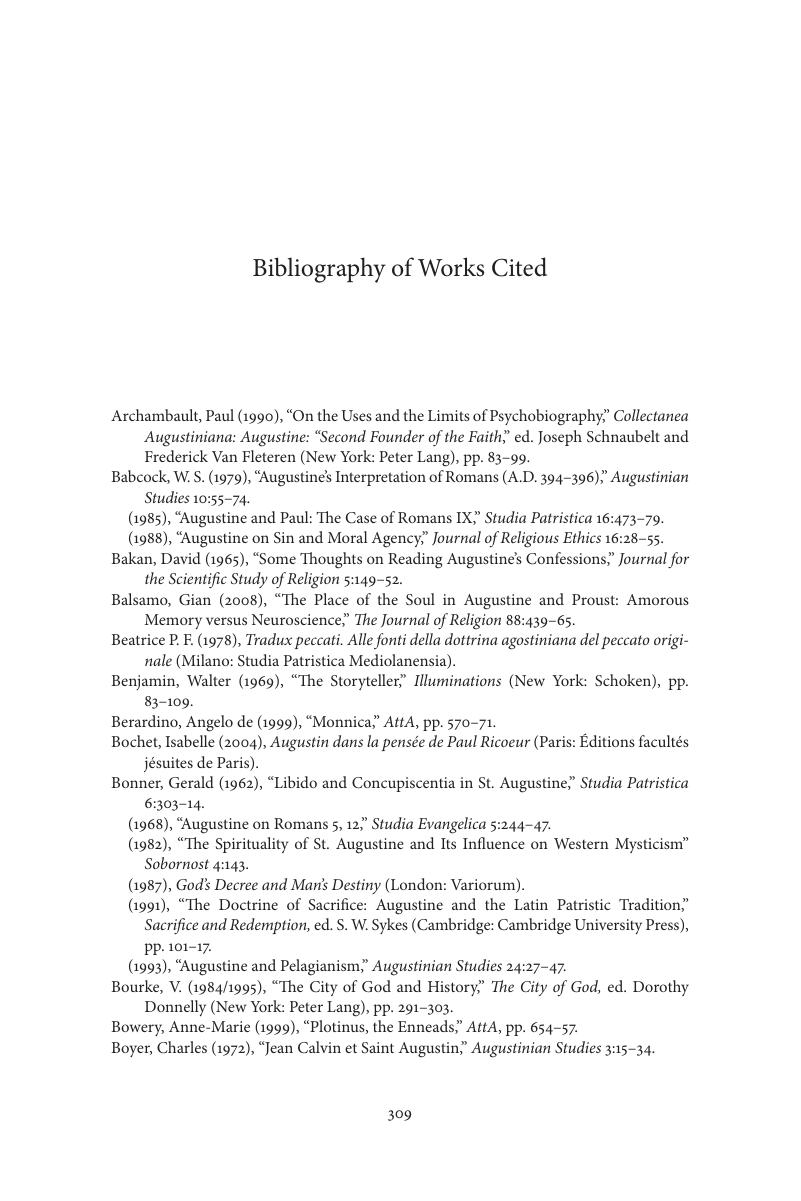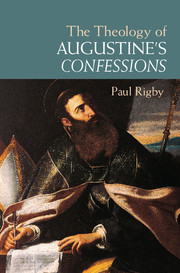Book contents
- Half title page
- Title page
- Copyright page
- Dedication
- Contents
- Preface
- Glossary
- Introduction
- 1 Confessio
- 2 Fatherhood: From Neurotic Phantasm to Compassionate Symbol
- 3 Narcissism and Narrative’s Vital Lie
- 4 Evil, Suffering, and Dualistic Wisdom
- 5 Original Sin: An Ineluctable Triple Hatred
- 6 Original Sin and the Human Tragic
- 7 “The Platitudes of Ethical Monotheism”
- 8 Inscrutable Wisdom
- 9 The Lyrical Voice
- 10 The Life of a Bishop: Reinventing Plato’s Celestial Clock,Confessions11–13
- 11 Resurrection and the Restless Heart
- Notes
- Bibliography
- Index
- References
Bibliography
Published online by Cambridge University Press: 05 March 2015
- Half title page
- Title page
- Copyright page
- Dedication
- Contents
- Preface
- Glossary
- Introduction
- 1 Confessio
- 2 Fatherhood: From Neurotic Phantasm to Compassionate Symbol
- 3 Narcissism and Narrative’s Vital Lie
- 4 Evil, Suffering, and Dualistic Wisdom
- 5 Original Sin: An Ineluctable Triple Hatred
- 6 Original Sin and the Human Tragic
- 7 “The Platitudes of Ethical Monotheism”
- 8 Inscrutable Wisdom
- 9 The Lyrical Voice
- 10 The Life of a Bishop: Reinventing Plato’s Celestial Clock,Confessions11–13
- 11 Resurrection and the Restless Heart
- Notes
- Bibliography
- Index
- References
Summary

- Type
- Chapter
- Information
- The Theology of Augustine's Confessions , pp. 309 - 320Publisher: Cambridge University PressPrint publication year: 2015



